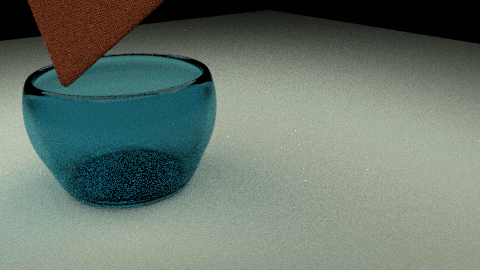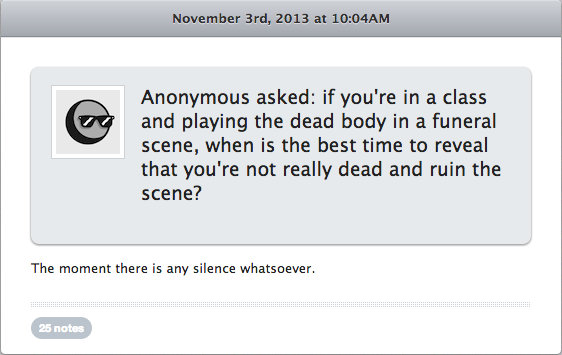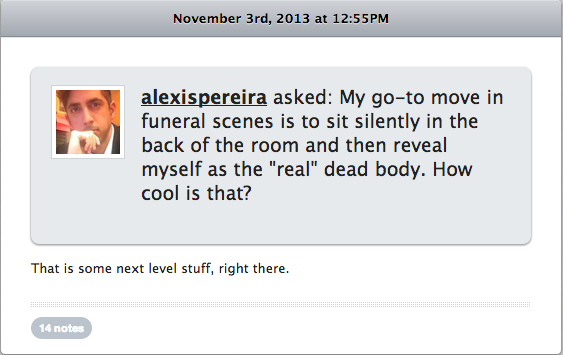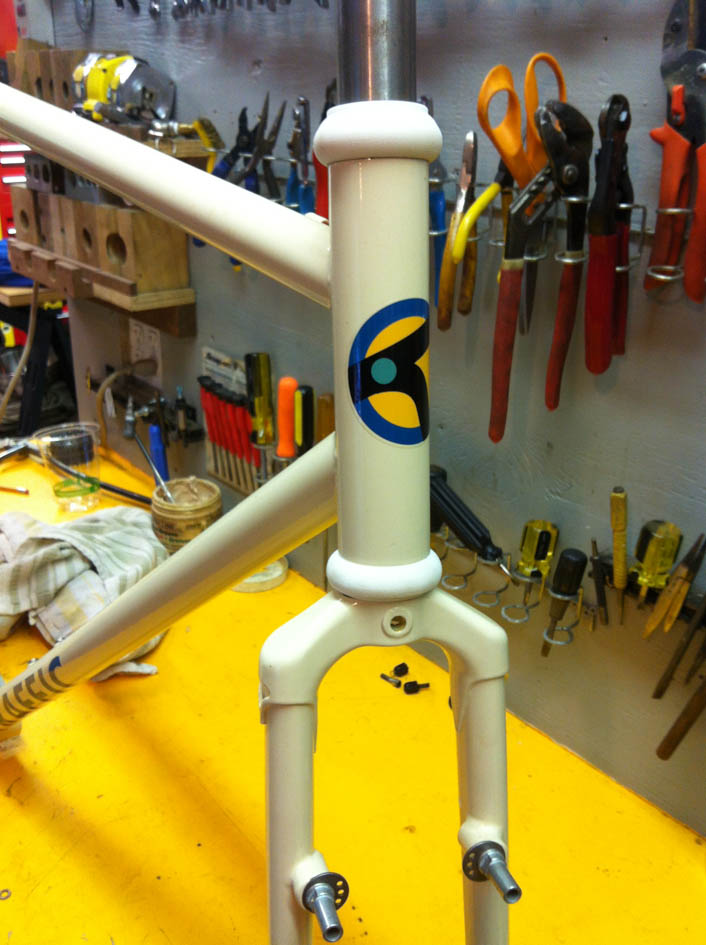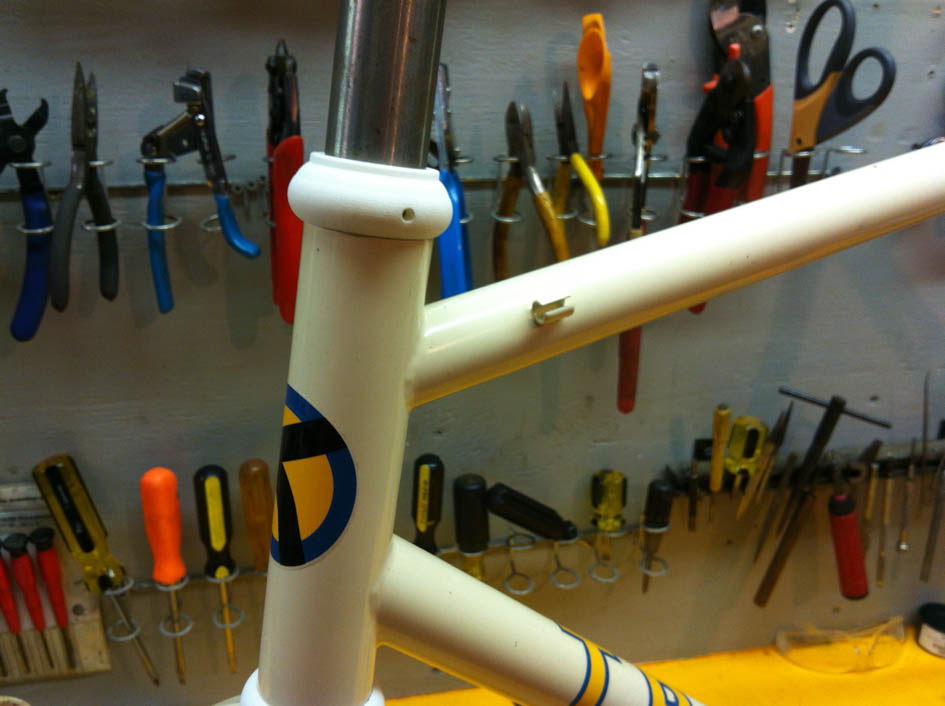This is kinda obscure, but I've spent the past few days learning all the ways that you *can't* get vector text into Autodesk Fusion 360. Fusion doesn't support text input directly, so I've been creating vector text in Illustrator and then exporting/importing. That's all fine, but there are also some issues in Fusion with importing SVGs... it's a bit unclear. Anyway I'm getting closer:
Management
We believe great management is built on a few key capabilities: giving great, inspirational feedback; active improvement of colleagues’ skills over time; and constructing project rhythms that extract outsize value from each member on a team. It’s not about efficiency or Gantt charts, it’s about helping the people around you achieve more when you’re around than when you’re not.
-Clay Parker Jones, in Medium; emphasis mine.
Misplaced Optimism
The following Q&A is excerpted from Makeway Magazine's interview with Jake Bronstein, of Flint & Tinder.
Through the journey so far, any particularly memorable stories that have helped you continue?
The first underwear factory featured in our video is particularly near and dear to my heart. It was in the foothills of PA and had been having a hard time for a VERY long time. We got them spun up making underwear (bought them a couple of pieces of equipment, learned to use it together etc) and in doing so kept nearly 100 people employed for 3 months. It wasn’t enough to keep the bank from foreclosing though. It was really hard watching, but it also crystalized the importance of what it is we’re going.
Here, a weird narrative. A "family owned and operated" factory in middle Pennsylvania is down on its luck. They're "ready for something better," so Bronstein - an entrepreneur and showman - makes them the lead role in his (highly successful) Kickstarter campaign. Here's the video:
I take Bronstein at his word that he worked intimately with his factory, and that if he could have had his way they would have remained open. But the portion of his $290K campaign that went to the factory apparently "wasn't enough to keep the bank from foreclosing," and the factory was shuttered.
The Flint & Tinder FAQ page claims that "for every 1,000 pair of underwear we sell per month, at least one sustainable job is added within our supply chain. " But what does "sustainable" mean, and why wasn't F&T able to keep the original factory open? What does a "sustainable" job look like once the bank forecloses?
I like American people as much as the next guy. But I'm highly skeptical of anyone who claims to be entering a business venture in order to lift American manufacturing out of its presumably sorry state. Poorly run operations will be shuttered, no matter where they're located. And procurement teams should choose suppliers based on whether they are able to fill orders.
I own F&T product, and I think it's totally fine. And I like a narrative as much as the next guy. But my experiences visiting factories in China were as compelling - if not more so - as my experiences visiting US facilities. As a consumer, I appreciate $.35 worth of human toil that went into making my cheap nail clippers, no matter where they came from. And as a supply chain specialist, I appreciate the vendor that can deliver what I want, when I want it, at a price that my consumers will pay for. That's all.
UPDATE: I posted this on 2013.11.11. On 2013.11.17, Flint & Tinder sent a sincere reply to me on twitter, saying they were confused by my post. I respect F&T's feelings, and will be writing up a clarification as soon as I'm able.
Working with a hardware product designer
Adapted from my answer on Quora.
Q: How do you find, hire, and work with a product designer?
As a hardware product designer myself, I can say that it's really important to be working with someone with whom you have a shared understanding of the product development process.
I've generally been lucky, but from time to time I have worked with clients who simply have a different idea about how hardware should/can/will be developed. While I tend to think that I'm right when it comes to these things, the bottom line is that it doesn't really matter: conflicts of this type are undesirable and difficult to resolve once you've entered into development.
Like with most things, it's up to the client to know what questions need to be asked. If it were me, I'd get smart in as many ways as you can. Start by going to hardware design/development/production meetups. Download a copy of Autodesk Fusion 360 and start modeling your ideas. Learn about as many manufacturing processes as you can, optimally visiting actual shops in person. The more you know, the better.
I would also recommend that you approach a designer with sketches and good specs for what you want to do and how you want it to look. In other words: if you have perspectives on these matters (some people don't, but more often they just don't communicate them effectively), you want to be clear on both design intent and aesthetics.
Something to keep in mind here: The more you bring to the table, the more clarity in your relationship with the rest of the development team, AND the less time & money you spend.
I would also, for what it's worth, take Tom Wolfe's "Man From Mars" stance, described here.
Simple Answers
Carrera
Via I Love My 911.
Dam
Flowchart
This is ambitious and possibly a little overdone. RE: My parts storage system feature requirements. Note, you can see a bigger version of this chart here.
If anyone's got feedback or thoughts on the flowchart specifically, I'm all ears. If you're actually interested in the product... well, holler.
Oh, also LucidChart is kinda cool.
Playing, a few months ago
Just a pretty diagram, showing some ideas for a marine monitoring system I was thinking about a few months ago.
I like it when technical drawings include depictions of something physical, too. Whatever about anti-skeuomorphism, right?
Cloth
This 3D simulation, by a guy named Rusty Smith, is awesome. Found on GrabCAD.
Naked
The moment that you feel that, just possibly, you’re walking down the street naked, exposing too much of your heart and your mind and what exists on the inside, showing too much of yourself. That’s the moment you may be starting to get it right.
Neil Gaiman. Via Brad Feld and Tim Ferriss.
Stack-O-Vocals
The vocal tracks on the deluxe version of Pet Sounds are just crazy. The way they drop down into the bridge on "Wouldn't it be Nice" is really incredible.
Not about form
From Vanity Fair's recent piece on Jony Ive and Marc Newson. Emphasis mine.
“We are both obsessed with the way things are made,” Newson said. “The Georg Jensen pitcher—I’m not even sure I love the way it looks, but I love how it is made starting with a sheet of silver.”
“We seldom talk about shapes,” Ive said, referring to his conversations with Newson. “We talk about process and materials and how they work.”
“It’s not about form, really—it’s about a lot of other things,” Newson said. Both designers are fascinated by materials; they understand that the properties of a material affect the way an object is made, and that the way it is made ought to have some connection to the way it looks. Theirs is a physical world, and for all that their shared sensibility might seem to be at the cutting edge, it is really a different thing entirely from the avant-garde in design today, which is the realm of the 3-D printer, where digital technology creates an object at the push of a button, craftsmanship is irrelevant, and the virtual object on the computer screen can be more alluring than the real thing.
Ive is the son of an English silversmith, and Newson, who grew up in Australia, studied jewelry design and sculpture; both were raised to value craft above all. It’s ironic that Ive, who has had such a big hand in the rise of digital technology, is made so unhappy, even angry, by the way that technology has led to a greater distance between designers and hands-on, material-shaping skills. “We are in an unusual time in which objects are designed graphically, on a computer,” Ive said. “Now we have people graduating from college who don’t know how to make something themselves. It’s only then that you understand the characteristics of a material and how you honor that in the shaping. Until you’ve actually pushed metal around and done it yourself, you don’t understand.”
I should begin by saying that while I take issue with the finer points of Newson & Ive's comments - and with much of the pontificating that the Vanity Fair writer engages in - I found it refreshing to read this passage. I value my time building physical objects immensely, and while I'm somewhat ambivalent about some of the career decisions I've made, I'm proud of the artifacts that exist as a result.
Were I a bit more pushy re: my design career, I'd tout the above passage as gospel. But the truth is that I'm not sure I believe that designers *need* to make things first, and anyway it's not like the design world agrees wholeheartedly with Ive either (my file handling skills just aren't that much of a selling point, and with just cause).
I also take issue with the cynicism expressed re: craftsmanship being irrelevant in the age of the 3D printer. I see no a priori reason for that to be the case, and if it's indeed the way the design world sees advanced manufacturing, I'm certainly unaware of it.
My time as a craftsman was brief; I shed the term almost as soon as it could reasonably have been applied to my work. But whatever its connotations are, I'm sure that my transition to digital design and manufacturing has not infringed. Craftsmanship - whatever it consists of - does not directly correlate with the size of one's calluses. Craftsmanship is an attitude about work and a focus on a particular (and generally small) skillset. And in my opinion, the romanticization of craftsmanship that I see around me (and in the tech world specifically) is unproductive and dangerous.
Side note: I can't tell exactly which pitcher these dudes are drinking out of, but I'm pretty sure it's fancy as hell.
Improv Nonsense
Two great posts on Improv Nonsense today. The first serves as a setup:
And the second is the real punchline:
Eames
Update: Dummy Headset
Short update on my Dummy Headset project!
First, I took v1 (the non-lightened version) and installed it on a frame I lad lying around. In order to do so, I had to tap threads into the holes that were SLA printed right into the parts, which I did by hand. Shapeways and the other 3D printing houses just won't do secondary operations (this is dumb and will in time change), but it only took a few minutes to do. For mockup purposes I used some cup point set screws that I had in my shop (the final version will have soft tipped set screws). The end result was pretty slick - my frameset now has the fork semi-permanently attached, and the whole thing is totally secure.
Of note: Here's a photo of the original dummy headset that I turned on my late circa 2010. I used little thumb screws on it, which were kind of convenient, but the overall look is too blocky for my eyes.
After mocking the whole thing up and seeing that it functioned as intended, I went ahead and ordered v2 of the parts, which are internally relieved to reduce build mass. They came a week or two ago, and I'm happy to say that I think they'll work just fine. The internal ribs probably aren't totally necessary, but they're kind of a cool feature and would be *impossible* to be made via conventional methods. I may end up removing most of them, but for this version I'm happy to have included them.
I also grabbed a few soft tipped set screws from McMaster, and am looking forward to seeing how they work. The nylon tipped one would be for carbon fiber steerers, which are pretty delicate and don't want a metal screw digging into them. The brass tipped screws would be for steel and aluminum steerers, which are much more durable.
I haven't had time to tap the holes in this version or install them on a frameset yet, but I have no reason to think they'll work anything other than perfectly. At that point I need to determine whether it's worth trying to get them injection molded or CNC machined in bulk. These SLA versions cost me about $20 for the set. If I had to guess, I'd say that they'd run $5-10/set for CNC machined and $2-3/set injection molded (in quantities of 100s, plus $2-3K in tooling and setup).
An old jig
Fixture building comprises a lot of a manufacturer's time, regardless of the scale of the operation. For small shops, designing fixtures that can be used repeatedly for different customers is extremely useful. I faced this challenge a number of times when I was working on bikes, and spent a lot of time setting up fixtures that helped my productivity a lot.
In 2010, I built the brake boss mitering jig below. It mounts to a tiny little rotary table that I bought for my Benchmaster, itself the tiniest horizontal mill that I owned and still one of my favorite tools.
It seems quaint, but little productivity tools like this are how shit gets done in even big production style factories around the world. I kid you not - little manual mills, drill presses and lathes are in operation as I write this, performing some little repeatable operation on high precision parts for demanding customers.
Eventually a lot of these things are likely to be sold for scrap and passed down the line to developing economies. I've been to a few tooling auctions, and have seen 75 year old punch and foot presses that weigh (literally) a ton being sold for under $100. I understood that they would be loaded into a container and shipped to Asia, and it's likely that they got a new life there making good parts for another decade or so at least.
I generally think that that lifecycle is a healthy one, though it does have the strange effect that nowadays, even the most industrious kids are likely to end up knowing additive manufacturing in lieu of conventional (mostly subtractive) methods. Schools around the country are buying up MakerBots by the truckloads, and with good cause - to fail to do so would be an offense on par with teaching me cursive in 1992, when what I should have been learning was C or HTML. But all those 3D printers have got to go somewhere, and I suspect [citation needed] that they're supplanting Heavy Tens and J-Heads, which anyway don't get too much use as it is.
While I'm reasonably unromantic about that transition, it does strike me that subtractive methods are likely to remain, for the long time, significantly more efficient and effective for making certain types of products. Just as CNC machining hasn't replaced casting, forging, and sheet fabrication, additive manufacturing won't totally replace those methods either. All of these tools will, instead, complement each other - and the institutional knowledge pertaining to traditional manufacturing will, I hope, be not supplanted but enriched by newer paradigms of manufacturing philosophy.
A thing from a while back
In 2009, I made a trio of seat lugs. They were intended for a batch of Dutch bikes that remain not much more than an idea.
The way one makes these things is silly, but it offers the designer considerable creative freedom. You essentially build the joint twice, and carve a lug in between. I made these when my file handling was at its zenith, which is both worth noting (file handling is underrated) and also a totally silly skill to possess.
Can
So, 3dfile.io supports Autodesk Inventor *and* Solidworks files right out of the box. Sketchfab, on the other hand, only does these dumb tessellated formats that all the 3D printing people use.
Note that the body appearances in this viewer actually aren't what I have them as in Inventor; apparently 3dfile.io is applying some sort of changes to the file when I upload it. Regardless, not having to export as a different file format is great. I don't see how I'll be using Sketchfab at all anymore.
Oh. Also, I modeled a can. Pretty neat, huh?
Two types of Uncertainty
What I think about when I'm working alone.
In my career, I have experienced two primary types of uncertainty. They are characteristically different in nature, and produce correspondingly distinct effects on my mood and outlook. They are uncertainty that what I'm working on will be significant, and uncertainty that what I'm working on will be noticed at all.
I am, like anyone else, motivated by self interest. I hope for some degree of public buy-in on the things that I work on and care about. I want people, and the market, to like me, and to think that the work I produce is worth paying for. And while I can be brash in certain circumstances, I remain deeply uncertain about the degree to which the market will value what I do.
But worse than that is the uncertainty of whether anyone will notice. I've spent much of my career working alone, and I accept that one needs to appreciate his own experiences outside of the possibility that anyone else cares about them. But that prospect remains a challenge to me. The idea that I will have struggled to complete things that nobody will see, that I will have felt deeply about things that nobody will be aware of, that I will have had experiences that I'll never be able to share with anyone else... it's a haunting sensation.
At the same time, there are things that are difficult to share - not because the act of sharing them is uncomfortable, but because they're not particularly relevant to anyone but myself. I write about as much of my life as I can here, but it's unclear how I would share a moment that transpired years ago and remains with me - but which, in itself, doesn't amount to much.
So, what to do? About a year ago, I brought my German Shepherd, Libo, on a weeklong trip to Northern California, where I lived 2001-2007. I got Libo later, after I had moved back to the East Coast, and going there with him was powerful in ways I hadn't anticipated. There was no way to communicate to him how lonely I was for much of my time there, and how significant it was to me that I was now able to share something about that time of my life with him. It was deeply gratifying, though the logic doesn't really add up. He had no idea where we were, and my emotional state was (I'm sure) as opaque to him then as it usually is.
Writing here is much the same. I throw bits of myself into the ether, but rarely do I hear anything back. If somebody is reading this now then I'm certainly unaware of it, and although I wish constantly for feedback, I accept that I won't always get it. It's only lonely if you call it that, but sometimes it's hard to know what else to call it.
No happy ending here. Aaaand... back to work!
:)


